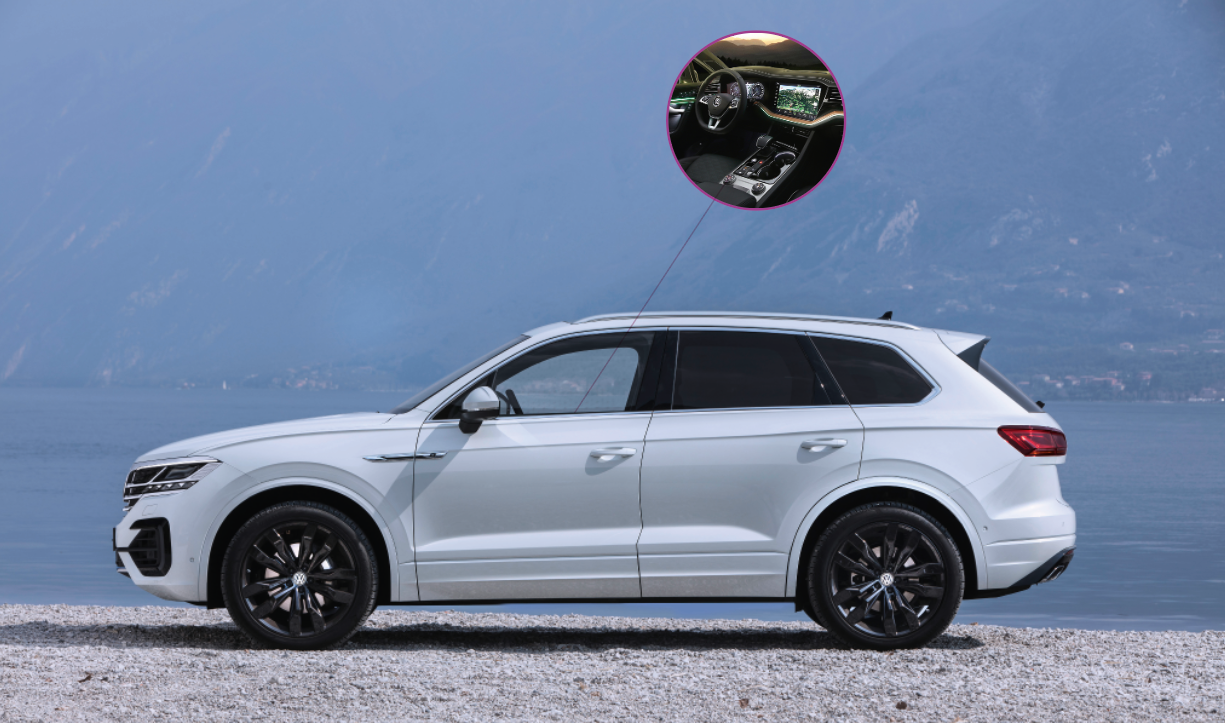Meet the car that will feel like your latest tech accessory – the Volkswagen 2018 Touareg

The brand-new, state-of-the-art Volkswagen Touareg was slightly overwhelming to experience at first. The first lesson I learnt was a lot has happened in technology space with cars in the past year.
The difference felt so abrupt because for a good chunk of this century, automobile technology hasn’t evolved in the same way we’ve seen mobile phones go from heavy, brick-like objects to sleek, ultra-smart devices.
Sure, there’s been major advancements, but according to Popular Mechanics, a lot of the most important automotive tech milestones – such as reversing cameras, Bluetooth integration and radar-based cruise control – happened in the late 1990s to early 2000s.
The cars I’ve driven and ridden in to date haven’t gotten me excited in the same way as the release of a new Apple product might. But if the Volkswagen Touareg is anything to go by, in-built technology has hugely stepped up come 2018, and feels a lot more on par with the tech we so frequently interact with in our day-to-day lives, like an iPhone or a tablet.
It’s not quite a flying car, à la The Jetsons, but it feels like one step closer to that direction. In fact, the car’s futuristic digital screen and minimalistic interior made it feel as though I was driving around in a spaceship for a couple of days.
Perhaps the most game-changing feature of the Volkswagen Touareg is the large digital screen in the dashboard called the ‘Innovision Cockpit’. You can’t miss it – it’s a dual 12-inch digital driver’s display on the dash and a 15-inch screen in the middle of the car that grabs your attention the moment you hop into the vehicle. Volkswagen says it’s the largest digital cockpit in its SUV class, and it sure feels that way.
It’s not quite a flying car, à la The Jetsons, but it feels like one step closer to that direction.
The majority of the controls and switches that would normally be found in a centre console have been re-homed here and incorporated into a digital interface. Just like a smartphone screen, it is slick, sophisticated and responds to gestures, touches and voice instead of buttons being pushed and dials being turned.

From this cockpit, you have free rein to completely customise the entire in-car experience, from tweaking the positioning of your seat, to charging your phone wirelessly, right through to selecting one of 30 colours for the LED lights that line the interior. It’s a level of control that will satisfy those who like to tweak every last detail of their surroundings, but you definitely need to spend some time learning to use it.
Once you get the hang of it, you find that the thinking behind its user experience is similar to that of a smartphone. You swipe sideways to move through its applications, swipe down for the main menu and go ‘home’ by pressing an Apple-like circle. It’s well designed, as far as car interfaces go.
It’s also within this digital dashboard that you get to see some of the car’s impressive safety features in play. Night vision mode uses an infrared camera to illuminate pedestrians, cyclists and even animals up to 130 metres in front of the car’s line of sight, helping warn of impending collisions.
But one of the stand-out features for me – a city slicker – is Traffic Jam Assist. I became an instant fan of it while stuck in bumper-to-bumper to traffic on my daily commute into Auckland City. When traffic is backed up, semi-automatic driving kicks in and the vehicle senses when the car in front starts and stops, automatically operating the accelerator and the brake accordingly. While unnerving at first, you wind up wholeheartedly embracing it.
In a similar vein, its Front Cross Traffic Assist feature uses radar sensors on each end of the bumper to monitor the area in front of the car, giving a warning on screen when it senses traffic crossing.
Another feature I was in awe of (but thankfully didn’t have to test out) was the Emergency Assist feature, which partially takes control over the vehicle when it finds the driver unresponsive. If the person driving fails to respond when the car issues a warning, it can attempt to revive the driver while flagging down another road user and alerting other passengers. It’s incredible that vehicle innovation has developed to this point and especially poignant in the New Zealand market, where road deaths and car accidents are an ongoing issue.

Plus, with the Touareg’s sheer size, safety is paramount. I was worried I wouldn’t feel secure in a nearly five-metre-long vehicle, but with all of the safety features assisting my drive via the Innovision Cockpit, I relaxed and felt comfortable within the first hour of driving it. Even little touches like the seatbelts tightening around your body when the car first takes off add to this feeling of security.
It’s worth noting that the actual driving experience itself in the V6 turbodiesel powered-car feels light, despite what the car is packing. It’s smooth and surprisingly swift when you do choose to put your foot down, thanks to the powerful 3.0-litre V6 TDI engine.
The V6 model starts at $92,990 plus on-road costs in New Zealand. When you consider that the Touareg shares the same clever technology under its body as a Bentley, Audi and Porsche, yet is the most affordable out of the bunch, it’s not a bad price tag – especially considering that this technology is a game-changer.




